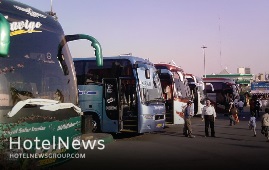
No ban on Noruz travels has been imposed for people who would use public transport, Transport and Urban Development Minister Mohammad Eslami announced on Sunday. No ban has been imposed on inactivity travels via public transport. And the criterion for the activity of the air, rail, and road fleets of the country is the observance of health protocols concerning the coronavirus pandemic, the minister explained. Earlier this month, President Hassan Rouhani declared new travel bans for cities situated in the “red” and “orange” zones to combat the new COVID-19 variant. Rouhani called on people to avoid traveling during the Iranian New Year holidays to help contain the spread of coronavirus. He said it would be forbidden to make trips to cities marked as “red” and “orange” in terms of the prevalence of COVID-19. “We request people to avoid traveling during Noruz holidays for the sake of their own health… It will be forbidden to travel to red and orange towns and cities,” he said. “No one should make any plans to travel to these cities,” he stressed. Late in February, the tourism minister, Ali-Asghar Mounesan, said despite all the obstacles and issues and the outbreak of the coronavirus, the country’s tourism sector is still alive and dynamic. Noruz ceremonies and trips, if practiced under health protocols, could be beneficial for the revival of the tourism industry and handicrafts, which have been severely affected by the coronavirus pandemic in many provinces, the minister explained. Iranians traditionally make hundreds of thousands of domestic trips during the New Year holidays, when most businesses and workplaces are closed, as are schools.
Create: Mar 16, 2021 Edit: Mar 16, 2021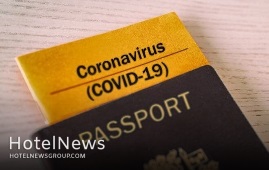
Head of the Iranian Tour Operators Association Ebrahim Pourfaraj has asked the government to issue tourist visas for the international applicants who have been fully vaccinated against COVID-19. “The Ministry of Health and the National Headquarters for Coronavirus Control can at least agree that the international tourists who have received the [second dose of] coronavirus vaccine would be allowed to enter Iran,” Pourfaraj said. He also lamented that the continuation of such a trend would result in losing international tourist markets more than before. “Or at least they should make it clear so that we can respond appropriately to foreign companies and tourists to not to miss the international tourist markets more than before.” Earlier this month, he said that the reasonable prices of Iran tours are expected to bring back the boom into the tourism sector of the country in the post coronavirus era. “Attractive tour plans are also being prepared for those who are eager to explore the historical attractions and natural wonders of the ancient country and want to experience a vacation here,” Pourfaraj said. He also expressed hope that international tour operators and companies who have worked with their Iranian counterparts for years, would put Iran back on the world’s travel route again, considering the facilities they can get at cheaper prices than in other countries. Referring to health tourism as a popular branch in Iran, he noted that medical services in Iran are provided at a lower price than what may be offered at double the price in other countries. Back in January, he announced that the tourist flow from across the world to Iran will return to normal in 2022. Although there are requests for traveling to Iran in the current year (2021), most travel agencies and tour operators believe that the flow will go back to normal in the next year, he explained. “Beginning mass vaccination against the coronavirus will provide better and safe conditions for international travels in 2022.” Last November, the World Tourism Organization announced that international tourist arrivals to Iran plunged 72% during the first eight months of 2020 when compared to 2019, highlighting the severe impact of COVID-19 as the main factor. Cultural Heritage, Tourism, and Handicrafts Minister Ali-Asghar Mounesan in October warned that Iran’s cultural heritage and tourism will be in a critical situation if the crises caused by the outbreak of the coronavirus continue. Last August, Mounesan said that Iran’s tourism has suffered a loss of 12 trillion rials (some $2.85 billion) since the outbreak of the coronavirus pandemic. Furthermore, the minister also noted that the coronavirus pandemic should not bring traveling to a complete standstill. “Corona is a fact, but can the virus stop tourism? Certainly not. For us, the coronavirus is a new experience in dealing with crises that teaches tourism experts around the world how to deal with such a disaster, and thankfully governments are turning this into an opportunity for better planning.” Smart and responsible traveling should replace "do not travel” recommendations, the minister stressed, adding: “In our country, Corona has caused problems in the tourism industry and the worrying point is the continuation of this trend.” “We are well aware of what the National Headquarters for Coronavirus Control proclaims [the health protocols], hence as a proposal, we have formulated some smart, responsible travel packages by the implementation of which we could have secure travels,” the minister said. He has repeatedly announced that his ministry is in full coordination with the Ministry of Health for strictly implementing health protocols in travel destinations, hospitably centers, and museums, amongst others, underlining that “people’s health is our priority.” The ancient land embraces hundreds of historical sites such as bazaars, museums, mosques, bridges, bathhouses, madrasas, mausoleums, churches, towers, and mansions, of which 24 being inscribed on the UNESCO World Heritage list. Under the 2025 Tourism Vision Plan, the country aims to increase the number of tourist arrivals from 4.8 million in 2014 to 20 million in 2025.
Create: Mar 16, 2021 Edit: Mar 16, 2021
The Iranian Civil Aviation Organization of Iran on Monday announced all flights to the country from Iraq have been suspended for a week to curb the spread of a Covid-19 strain. The decision was made as a pre-emptive measure to protect the Iranian citizens against the variant which was first detected in Britain late last year. The Civil Aviation Organization in a statement announced that all flights of Iranian and Iraqi airlines from Iraq were suspended for one week effective as of Mar. 14 due to the UK COVID-19 variant, Mehr reported. Due to the outbreak of a new type of UK coronavirus and to observe necessary precautions and protect the health of citizens, effective measures have been taken in this regard, the statement added. Also, all domestic airlines are obliged to inform passengers of the case timely, the organization announced. Late in February, the CAO suspended all flights to and from 32 countries due to the latest decision of the National Headquarters for Coronavirus Control. The restrictions limited travels between the Islamic Republic and England, Angola, Bolivia, Botswana, Burundi, Cape Verde, Chile, Colombia, Democratic Republic of the Congo, Ecuador, Eswatini, French Guinea, Lesotho, Guyana, Malawi, Mauritania, Mauritania, Rwanda, Sicily, Suriname, Tanzania, Uruguay, Venezuela, and Zambia. For more than a year, the worldwide outbreak of COVID-19 has brought the world to a standstill, and tourism has been the worst affected of all major economic sectors. World tourist arrivals fell by 72% over the first ten months of 2020, according to data compiled by the World Tourism Organization (UNWTO) in December. Restrictions on travel, low consumer confidence, and a global struggle to contain the coronavirus pandemic are amongst factors contributing to the worst year on record in the history of tourism. Iran has also suffered the same fate as its foreign arrivals plunged 72% during the first eight months of 2020 when compared to 2019.
Create: Mar 16, 2021 Edit: Mar 16, 2021
As you are well aware, medical tourism is booming worldwide as about 20 to 24 million people are traveling for medical treatments annually. Factors such as increased care needs over longer lifespans, rising healthcare costs, and constant pressures on some insurance industries are reasons behind why some opt to travel abroad. Regarding price competitiveness, Iran currently ranks first in the world but the country has not been very successful in attracting potential travelers as other competitors like Singapore and Turkey. People from the Persian Gulf littoral states, Iraq and Syria as well as Iranian expatriates residing in Canada and Germany constituted the majority of medical travelers to the Islamic Republic, who received plastic, cosmetics, open-heart, and orthopedic surgeries amongst other treatments over the past couple of years. A recent study co-authored by Iranian researchers Khalil Momeni, Ali Jannati, Rahim Khodayari-Zarnaq, Shabnam Ghasemyani, and Mohamadreza Havasian, suggests the main difference between Iran other countries they selected for the study lies in the organizational structure of the main stakeholders of the tourism industry; in other countries, this industry is organized and supervised by specific coordination bodies. Data were gathered from databases, including PubMed, Web of Knowledge, Scopus, Magiran, SID, and websites of the World Tourism Association, the Ministry of Tourism, and the Ministry of Health of the selected countries from 2000 to 2020. The study was published in the Melbourne-based Healthscope, which operates private hospitals, medical centers, and international pathology services. Six countries were selected purposefully, including Singapore, Turkey, Costa Rica, Jordan, United Arab Emirates, and Iran. They were compared in terms of the status of tourism and travel competitiveness, governance and policy-making status, the status of the medical tourism industry, and medical tourism infrastructure. In terms of tourism and travel competitiveness, Singapore, with a global rank of 17, was better than other countries. Based on the status of the medical tourism industry, Costa Rica ranked 7th in the world, and Singapore, the UAE (Dubai), Turkey, UAE (Abu Dhabi), Jordan, and Iran ranked 15, 22, 27, 31 35, and 41, respectively. In Iran, all indicators of medical tourism infrastructure were lower than those of other countries except for competitive prices. Comparative tables involved components, such as general profile, tourism and travel competitiveness, governance and policy, the status of the medical tourism industry, and medical tourism infrastructure in selected countries. The framework analysis based on the identified components was used to analyze the data. Furthermore, the study has confirmed that despite the legal framework for medical tourism development in Iran, this industry is currently facing several challenges. “These challenges are lack of specific medical tourism structure at the international, national, and regional levels, the lack of a medical tourism system, definition and formulation of laws, policies, and plans, the lack of infrastructure, and the lack of supervision system.” All of the indicators in tourism and travel competitiveness are low in Iran except pricing, which is ranked as the first cheapest country in the world. The growing medical tourism industry requires the optimal provision of all tourism infrastructures and not only the promotion of different indicators, the study suggests. Based on the report of the Medical Tourism Organization, the UAE, Turkey, and Jordan are the three most important destinations for medical tourism in West Asia. Even though Iran has good conditions in terms of competitive price, presence of skilled physicians, and low waiting time among the studied countries, but other medical tourism infrastructures are not enough invested. For example, until 2017, Iran has not been able to obtain a JCI license even for one hospital, and the average per capita physician/nurse index is much lower than the global one. To promote medical tourism, it is necessary to recognize the strategic medical tourism status of each province in the country, supply a specialized workforce, provide high-quality services, improve infrastructure, and promote a positive attitude of authorities to support the medical tourism industry. The study has also found that factors that can play a positive role in the development of medical tourism in Iran are advanced services for infertility treatment, cosmetic and dental surgery, organ transplantation and cell therapy, cultural similarity and familiarity with neighboring countries, and competitive prices. Measures, such as improving human resource communication skills and developing private hospitals following international standards, can also be effective in developing medical tourism. The main difference between the selected countries and Iran lies down in the organizational structure of the main stakeholders of the tourism industry. The study showed that one of the challenges for growing medical tourism in Iran is the presence of different organs of political and decision-making, as well as the cultural and political conditions. In all other countries, this industry is organized and supervised by specific coordination bodies. The revise of coordinating policies and strategies between various ministries, other government bodies, the private sector could help facilitate cross-sectoral coordination in this area. One of the important factors in the development of the medical tourism industry is the focus on attracting tourists from neighboring countries. Generally, certain populations are attracted more to certain locations. This might be due to a similar ethnic and cultural background. “To increase Iran’s ability to compete with countries in the region, such as Turkey, in attracting medical tourists, long-term plans should be developed to strengthen the infrastructure and cultural reforms, increase private sector participation and plan for the efficient use of mass media and local press for raising awareness. This requires a national effort and redefining the role of health tourism in the economy, as well as a strong trustee to follow up these measures,” the study suggests. According to the authors, the strengths points of the present study are the comprehensiveness of the selected countries and obtaining systematic information according to the appropriate strategy search. One of the limitations of the study is that in many items, the existing indicators are not updated, and some of the documents were in languages other than English and Persian. The Islamic Republic has set goals to exceed its yearly medical travelers to around two million in [calendar year] 1404 (March 2025-March 2026). Amongst Iran’s trump cards are the presence of credible surgeons and physicians, cutting-edge medical technologies, high-tech medicine and diverse specializations, super affordable procedures, and finally its hospitable people.
Create: Mar 13, 2021 Edit: Mar 13, 2021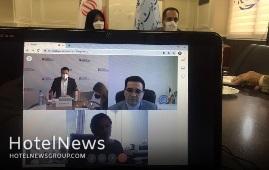
Iran and Slovakia on Thursday held an online meeting, in which high-level tourism officials, tour operators, and hoteliers discussed ways to boost tourism ties between the two countries in the post-coronavirus era. A key priority for Iran’s tourism sector is to restore tourism ties with previous markets and expand into new international markets such as Slovakia when the coronavirus crisis comes to an end, Mohammad Qasemi, the director for marketing and advertising at the tourism ministry said, IRNA reported. Regarding the unique characteristics and features of Iranian tourism as a different destination for the visitors from Slovakia, he emphasized the need for enhanced private sector relationships between the two countries to lead to the development of an efficient bilateral tourism exchange. Emphasizing the two countries’ capacity for caving, hydrotherapy, skiing, and national and natural parks, he also suggested that successful experiences be shared through training workshops and courses between the two sides. Elsewhere in his remarks, the Iranian official reminded the tremendous impact of the novel coronavirus pandemic on global tourism, adding that the Iranian government has provided support for travel businesses affected by the disease. The Slovak delegation also hailed the expansion of ties in the arenas of tourism and cultural heritage. Moreover, the Slovak Association of Tour Operators & Travel Agents (SACKA) expressed readiness to start bilateral tourism as soon as the virus is contained. The two centuries also agreed to draft a memorandum of understanding to lay the ground for further cooperation including fam tours for media personnel and tour operators. Last November, the World Tourism Organization announced that international tourist arrivals to Iran plunged 72% during the first eight months of 2020 when compared to 2019, highlighting the severe impact of COVID-19 as the main factor. Cultural Heritage, Tourism, and Handicrafts Minister Ali-Asghar Mounesan in October warned that Iran’s cultural heritage and tourism will be in a critical situation if the crises caused by the outbreak of the coronavirus continue. Last August, Mounesan said that Iran’s tourism has suffered a loss of 12 trillion rials (some $2.85 billion) since the outbreak of the coronavirus pandemic. He also noted that the coronavirus pandemic should not bring traveling to a complete standstill. “Corona is a fact, but can the virus stop tourism? Certainly not. For us, the coronavirus is a new experience in dealing with crises that teaches tourism experts around the world how to deal with such a disaster, and thankfully governments are turning this into an opportunity for better planning.” Optimistic forecasts, however, expect Iran to achieve a tourism boom after coronavirus contained, believing its impact would be temporary and short-lived for a country that ranked the third fastest-growing tourism destination in 2019. The latest available data show eight million tourists visited the Islamic Republic during the first ten months of the past Iranian calendar year (started March 21, 2019). Iran welcomed some 7.8 million foreign nationals a year earlier, achieving a 52.5 percent increase year on year. The ancient land embraces hundreds of historical sites such as bazaars, museums, mosques, bridges, bathhouses, madrasas, mausoleums, churches, towers, and mansions, of which 24 being inscribed on the UNESCO World Heritage list. Under the 2025 Tourism Vision Plan, the country aims to increase the number of tourist arrivals from 4.8 million in 2014 to 20 million in 2025.
Create: Mar 13, 2021 Edit: Mar 13, 2021
TB Berlin (Internationale Tourismus-Börse Berlin), which bills itself as the world’s leading travel trade show, has presented a taste of Iran. Due to the pandemic, ITB Berlin was held virtually from March 9-12, featuring some 3,300 exhibitors from 120 countries. The Cultural Heritage, Tourism, and Handicrafts Ministry as well as several private-run businesses promoted the country, hammering home the message of diversity and richness in recreational, cultural, natural, and medical arenas of tourism. “The presence of the Islamic Republic of Iran, particularly its the private sector, in this fair shows the dynamism of the country's tourism industry after a year of closure…., and we declare in this exhibition that we are ready to bring tourism back on track again after the epidemic is curbed,” said Vali Teymouri, the deputy tourism chief. The number of foreign visitors to Iran plunged 94% in the first nine months of the current Iranian calendar year (started March 20, 2020), from a year earlier, government data showed on Wednesday, as the coronavirus pandemic takes a heavy toll on the tourism industry. “Some 450,000 foreign travelers arrived in Iran for mainly medical or trade purposes during the first nine months of the year… tightened measures to tackle the new coronavirus has reduced international travel to the country by 94 percent,” according to the official. The global tourism industry has been plagued by the outbreak of the coronavirus for more than a year, which is a record in the history of this industry, the official noted. In an interview with the Tehran Times, the official noted: “We need to revise marketing strategies, and to redefine tourism products by paying great attention to nature tours, rural tourism, and ecotourism, agricultural tourism as a tool to empower local communities and travel businesses.” Tourism minister, Ali-Asghar Mounesan, announced in February that the tourism industry of the country had suffered a loss of some 220 trillion rials (about $5.2 billion at the official exchange rate of 42,000 rials per dollar) since the outbreak of the coronavirus pandemic. “Iran’s tourism has suffered some 220 trillion rials due to corona pandemic so far…. and we hope that with the production of domestic vaccines, tourism will flourish in 1400 [the new Iranian calendar year which begins on March 21],” Mounesan said. “Over 1.5 million jobs have been lost in the tourism sector of Iran due to the COVID-19 disease…. Many of the tourism-insiders are now unemployed or they are staying at home,” Mounesan said. Iranian tourism officials are optimistic about the fate of national tourism as soon as the virus wanes.
Create: Mar 13, 2021 Edit: Mar 13, 2021
Iran will set aside ten billion rials (some $240,000 at the official exchange rate of 42,000 rials per dollar) for the restoration of the Great Wall of Gorgan, Cultural Heritage, Tourism and Handicrafts Minister Ali-Asghar Mounesan said on Sunday. Situated in the city of Gorgan, the capital of northern Golestan province, the defensive wall is about 200 km in length, and it was built to prevent the invasion of the northern tribes. It is said to be the longest architectural work of ancient Iran, which was built in 90 years. “We will allocate one billion tomans (ten billion rials) of credit for the restoration of the Great Wall of Gorgan, so that with this credit, the measures for the restoration of this wall, along with aerial imaging and mapping, will be carried out as preliminaries for [the possible] UNESCO registration,” Mounesan said. The minister made the remarks in a meeting with provincial officials and cultural figures during his visit to the lush green province. Last December, Mounesan’s deputy for cultural heritage, Mohammad-Hassan Talebian, said: “Gaining a UNESCO tag for the Great Wall of Gorgan -- one of the longest brick barriers of the ancient world -- is not hard as it is comparable to the Great Wall of China in terms of age, function, and size.” Although there are some issues and obstacles, further efforts to preserve and restore the millennia-old wall could be an acceptable justification for UNESCO to add this structure to the World Heritage list, Talebian explained. To get to that point, complete and accurate mapping of the remnants of the wall is needed, for which a budget of 20 billion rials ($476,000 at the official rate of 42,000 rials) has been allocated so far official added. He also noted that if the mapping project comes to an end by the end of the current Iranian year 1399 (March 20, 2021), the inscription of the wall on the World Heritage list would be discussed and possibly approved by the end of the next summer. Also known as Red Wall, which in some ancient texts is referred to as the Red Snake, this wall is the longest brick ancient barrier between Central Europe and China, longer than Hadrian’s Wall and the Antonine Wall put together and the third-largest wall in the world after the walls of China and Germany. Most parts of the gigantic monument are still hidden underneath the surface through some segments that have so far been unearthed and even restored to former glory. Archaeological excavations have so far identified ditches, brick kilns, earthen dams, water canals, 38 forts, and watchtowers attached to the wall, and more than 25 castles in the southern margin of the wall as well as several ancient sites from prehistoric, historic, and Islamic eras. The gigantic barrier is also more than three times the length of the longest late Roman defensive wall built from scratch, the Anastasian Wall west of Constantinople. The combined area of the forts on the Gorgan Wall exceeds that of those on Hadrian’s Wall about threefold. According to UNESCO, the Gorgan Wall is remarkable not only in terms of its physical scale but even more so in terms of its technical sophistication. To enable construction works, canals had to be dug along the course of the defensive barrier to provide the water needed for brick production. These canals received their water from supplier canals, which bridged the Gorgan River via qanats. One of these, the Sadd-e Garkaz, survives to 700 m in length and 20 m in height but was originally almost one kilometer long. The Gorgan Wall and its associated ancient military monuments provide a unique testimony to the engineering skills and military organization of the Sassanian Empire. They help to explain its geographic extent, from Mesopotamia to the west of the Indian Subcontinent, and how effective border defense contributed to the Empire’s prosperity in the interior and its longevity. These monuments are, in terms of their scale, historical importance, and sophistication, of global significance. Golestan is reportedly embracing some 2,500 historical and natural sites, with UNESCO-registered Gonbad-e Qabus – a one-millennium-old brick tower – amongst its most famous.
Create: Mar 9, 2021 Edit: Mar 9, 2021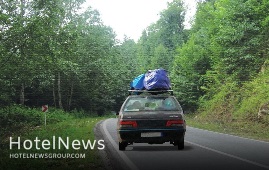
Iranian President Hassan Rouhani on Saturday declared new travel bans for cities situated in the “red” and “orange” zones to combat the new COVID-19 variant. Rouhani called on people to avoid traveling during the Iranian New Year holidays to help contain the spread of coronavirus. He said it would be forbidden to make trips to cities marked as “red” and “orange” in terms of the prevalence of COVID-19. We request people to avoid traveling during Noruz holidays for the sake of their own health… It will be forbidden to travel to red and orange towns and cities,” he said. “No one should make any plans to travel to these cities,” he stressed. The president said the tolerance of the country’s health system “has a limit,” urging the public to cooperate when it comes to observing health protocols. Late in February, the tourism minister, Ali-Asghar Mounesan, said despite all the obstacles and issues and the outbreak of the coronavirus, the country’s tourism sector is still alive and dynamic. Noruz ceremonies and trips, if practiced under health protocols, could be beneficial for the revival of the tourism industry and handicrafts, which have been severely affected by the coronavirus pandemic in many provinces, the minister explained. His deputy for tourism, Vali Teymouri, in February announced that the tourism ministry has gained official permission for organizing limited intercity travels during the Iran New Year vacations from the National Headquarters for Coronavirus Control. Well-planned travels during the Noruz holidays, which will start on March 20, would be possible in close coordination with the National Headquarters for Coronavirus Control, Teymouri said. “In order to create social vitality during the holidays, the ministry has set some rules for possible Noruz trips to control and monitor them carefully,” he said. “The trips will be possible only within the framework of planned tours through licensed travel agencies and under the supervision of the tourism ministry.” For people, who travel individually and outside of the tours, a reservation for an authorized accommodation center will be necessary, the official added. He also emphasized that all travelers and tourists need to follow strict health protocols during their trips and stays. With less than a month to go till the start of the Iranian New Year, which has long been associated with millions of domestic travels, the ministry wants to find a way to partially revive the already-slumped travels in the face of the COVID-19 pandemic, he noted. Iranians traditionally make hundreds of thousands of domestic trips during the New Year holidays, when most businesses and workplaces are closed, as are schools.
Create: Mar 8, 2021 Edit: Mar 8, 2021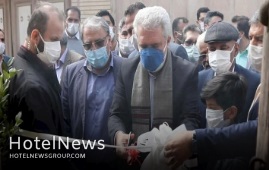
Cultural Heritage, Tourism, and Handicrafts Minister Ali-Asghar Mounesan inaugurated a hotel and two traditional guesthouses during his visit to the central city of Kashan on Tuesday. A budget of five trillion rials ($119 million at the official exchange rate of 42,000 rials per dollar) has been allocated for the establishment of the hotel, which is estimated to generate 120 job opportunities, CHTN reported. The total budget for traditional guesthouses also amounts to 170 billion rials ($4 million), the report added. The guesthouses are expected to create 40 new jobs as well. There is an additional 160 beds to the hospitality sector in the city with the inauguration of the accommodation centers. Kashan is a historical city near Isfahan in the central part of Iran. Its history dates back to over ten thousand years ago, and it is home to some of the most beautiful buildings featuring Islamic architecture. Many travelers opt to pass Kashan on their journeys between Tehran, Isfahan, Shiraz and Yazd, because this delightful oasis city on the edge of the Dasht-e Kavir, is one of Iran’s most alluring destinations. Kashan not only boasts a cluster of architectural wonders, an atmospheric covered bazaar, and a UNESCO-recognized garden, but it also offers some of central Iran’s best traditional hotels. The annual Golab-giri (rosewater distillation) ceremony of Kashan attracts huge crowds to the city every year. Some of the most ancient traces of civilization have been discovered near Kashan, at the Sialk archeological site.
Create: Mar 7, 2021 Edit: Mar 7, 2021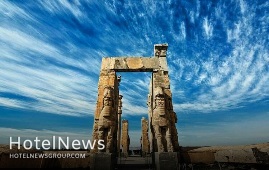
An archaeological discovery lately been made in the vicinity of Persepolis has shed new light on the once ceremonial capital of the Achaemenid empire. Excavations and surveys on Tall-e-Ajori, which is situated in the surrounding areas of the UNESCO-registered Persepolis, are expected to help archaeologists uncover more about the history of the royal city. Regarding the significance of such excavations around Persepolis, the director of the World Heritage site on Wednesday noted: “[Some] half of the ancient world was led and managed from the Persepolis.” There is ample evidence for the claim, which could be found across the Marvdasht plain, which is also home to the UNESCO-registered Pasargadae, and several historical sites as well as villages and small towns scattered in an area of 85,000 hectares around Persepolis, Hamid Fadaei added. However, protecting and preserving such a vast area would be a challenging and time-consuming task, he explained. The official also noted that besides the archeological significance, the ecosystem and natural resources, and capacities of the area should be taken into consideration. Supervised by a joint mission of Iranian and Italian archaeologists and cultural heritage experts, the excavations on Tall-e-Ajori uncovered vestiges of a massive gateway measuring 30 by 40 meters with a height of approximately 12 meters. The archaeologists succeeded in proving that Cyrus had ordered the construction of the gateway near Persepolis in Tall-e-Ajori and that this magnificent gateway had been put into operation during the reign of his son Cambyses. “The building had a corridor in the center, which was in form of a rectangular room measuring eight by twelve meters, and inside this central room, there were four living chairs. And the central corridor opened on both sides to the Achaemenid campus,” according to Alireza Askari-Charoudi who is a senior Iranian archaeologist. The royal city of Persepolis ranks among the archaeological sites which have no equivalent, considering its unique architecture, urban planning, construction technology, and art. Persepolis, also known as Takht-e Jamshid, whose magnificent ruins rest at the foot of Kuh-e Rahmat (Mountain of Mercy) is situated 60 kilometers northeast of the city of Shiraz in Fars province. The city was burnt by Alexander the Great in 330 BC apparently as revenge to the Persians because it seems the Persian King Xerxes had burnt the Greek City of Athens around 150 years earlier. The city’s immense terrace was begun about 518 BC by Darius the Great, the Achaemenid Empire’s king. On this terrace, successive kings erected a series of architecturally stunning palatial buildings, among them the massive Apadana palace and the Throne Hall (“Hundred-Column Hall”). This 13-ha ensemble of majestic approaches, monumental stairways, throne rooms (Apadana), reception rooms, and dependencies is classified among the world’s greatest archaeological sites. Persepolis was the seat of the government of the Achaemenid Empire, though it was designed primarily to be a showplace and spectacular center for the receptions and festivals of the kings and their empire. The site is marked by a large terrace with its east side abutting the Kuh-e Rahmat (“Mount of Mercy”). The other three sides are formed by a retaining wall, varying in height with the slope of the ground from 13 to 41 feet (4 to 12 meters); on the west side, a magnificent double stair in two flights of 111 short stone steps leads to the top. On the terrace are the ruins of several colossal buildings, all constructed of a dark gray stone (often polished to a marble-like surface) from the adjacent mountain. According to Britannica, the stone was cut with the utmost precision into blocks of great size, which were laid without mortar; many of them are still in place. Especially striking are the huge columns, 13 of which still stand in the audience hall of Darius I (the Great; reigned 522–486 BC), known as the Apadana, the name given to a similar hall built by Darius at Susa. There are two more columns still standing in the entrance hall of the Gate of Xerxes, and a third has been assembled there from its broken pieces. In 1933 two sets of gold and silver plates recording in the three forms of cuneiform—ancient Persian, Elamite, and Babylonian—the boundaries of the Persian empire were discovered in the foundations of Darius’s hall of audience. Several inscriptions, cut in stone, of Darius I, Xerxes I, and Artaxerxes III indicate to which monarch the various buildings were attributed.
Create: Mar 6, 2021 Edit: Mar 6, 2021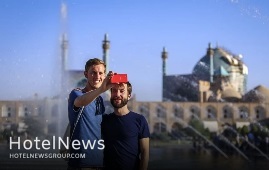
The reasonable prices of Iran tours are expected to bring back the boom into the tourism sector of the country in post coronavirus era, the head of the Iranian Tour Operators Association has said. “Attractive tour plans are also being prepared for those who are eager to explore the historical attractions and natural wonders of the ancient country and want to experience a vacation here,” Ebrahim Pourfaraj said on Thursday. He also expressed hope that international tour operators and companies who have worked with their Iranian counterparts for years, would put Iran back on the world’s travel route again, considering the facilities they can get at cheaper prices than in other countries. Referring to health tourism as a popular branch in Iran, he noted that medical services in Iran are provided at a lower price than what may be offered at double the price in other countries. Back in January, the official announced that the tourist flow from across the world to Iran will return to normal in 2022. Although there are requests for traveling to Iran in the current year (2021), most travel agencies and tour operators believe that the flow will go back to normal in the next year, he explained. Beginning mass vaccination against the coronavirus will provide better and safe conditions for international travels in 2022, he added. Last November, the World Tourism Organization announced that international tourist arrivals to Iran plunged 72% during the first eight months of 2020 when compared to 2019, highlighting the severe impact of COVID-19 as the main factor. Cultural Heritage, Tourism, and Handicrafts Minister Ali-Asghar Mounesan in October warned that Iran’s cultural heritage and tourism will be in a critical situation if the crises caused by the outbreak of the coronavirus continue. Last August, Mounesan said that Iran’s tourism has suffered a loss of 12 trillion rials (some $2.85 billion) since the outbreak of the coronavirus pandemic. He also noted that the coronavirus pandemic should not bring traveling to a complete standstill. “Corona is a fact, but can the virus stop tourism? Certainly not. For us, the coronavirus is a new experience in dealing with crises that teaches tourism experts around the world how to deal with such a disaster, and thankfully governments are turning this into an opportunity for better planning.” Optimistic forecasts, however, expect Iran to achieve a tourism boom after coronavirus contained, believing its impact would be temporary and short-lived for a country that ranked the third fastest-growing tourism destination in 2019. The latest available data show eight million tourists visited the Islamic Republic during the first ten months of the past Iranian calendar year (started March 21, 2019). Iran welcomed some 7.8 million foreign nationals a year earlier, achieving a 52.5 percent increase year on year. The ancient land embraces hundreds of historical sites such as bazaars, museums, mosques, bridges, bathhouses, madrasas, mausoleums, churches, towers, and mansions, of which 24 being inscribed on the UNESCO World Heritage list. Under the 2025 Tourism Vision Plan, the country aims to increase the number of tourist arrivals from 4.8 million in 2014 to 20 million in 2025.
Create: Mar 6, 2021 Edit: Mar 6, 2021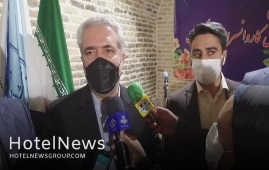
The Iranian government has paid 6.5 trillion rials ($154.7 million at the official exchange rate of 42,000 rials per dollar) in loans to the tourism businesses affected by the coronavirus pandemic across the country in the current Iranian year 1399 (started on March 20, 2020), the tourism minister has said. Although the coronavirus outbreak has caused significant damage to the tourism industry, one of the ministry’s strategic plans is to diversify tourism products, which is expected to expand economic prosperity, Ali-Asghar Mounesan announced on Monday. Several historical structures and aging buildings have been revived and repurposed into different accommodation centers to attract more domestic and foreign travelers, he added. In recent years, nature tourism has also gained popularity due to the country’s natural beauty and attractions, he explained. In this regard, several eco-lodge units have been established even in the farthest regions of the country as well, the minister noted. Elsewhere in his remarks, he expressed hope that limited Noruz trips would be possible, if practiced under health protocols, during the Iranian New Year vacations, which begins on March 21. Government’s care and support packages Last October, the deputy tourism chief, Vali Teymouri, announced that a new support package was approved to pay loans to businesses affected by the coronavirus pandemic. Depending on the type and activity of the businesses, they could benefit from at least 160 million rials ($3,800 at the official rate of 42,000 rials) to nine billion rials ($214,000) of bank loans with a 12-percent interest rate, he said. The loans would be allocated to tourist guides, travel agencies, tourism transport companies, tourism educational institutions, eco-lodges and traditional accommodations, hotels, apartment hotels, motels, and guesthouses as well as traditional accommodation centers, tourism complexes, and recreational centers, the official explained. Teymouri in September pointed to the 1.3 million tourism workers in the country, who are facing several issues due to the coronavirus crisis and said “This number, in addition to their households, includes a significant population that makes a living through tourism, who are needed to be considered in ministry’s decisions.” Back in August, Teymouri announced that the tourism ministry had approved a total budget of 4,920 billion rials (over $117 million) to support corona-affected tourism businesses, covering as much as 36,000 people working in the tourism sector. Tourism industry in critical situation Mounesan in October warned that Iran’s cultural heritage and tourism would be in a critical situation if the crises caused by the outbreak of the coronavirus continue. Last August, the tourism minister said that the tourism sector of the Islamic Republic had suffered a loss of 12 trillion rials (some $2.85 billion) since the outbreak of the coronavirus pandemic. He also noted that the coronavirus pandemic should not bring traveling to a complete standstill. “Corona is a fact, but can the virus stop tourism? Certainly not. For us, the coronavirus is a new experience in dealing with crises that teaches tourism experts around the world how to deal with such a disaster, and thankfully governments are turning this into an opportunity for better planning.” Optimistic forecasts, however, expect Iran to achieve a tourism boom after coronavirus contained, believing its impact would be temporary and short-lived for a country that ranked the third fastest-growing tourism destination in 2019. The latest available data show eight million tourists visited the Islamic Republic during the first ten months of the past Iranian calendar year (started March 21, 2019).
Create: Mar 3, 2021 Edit: Mar 3, 2021